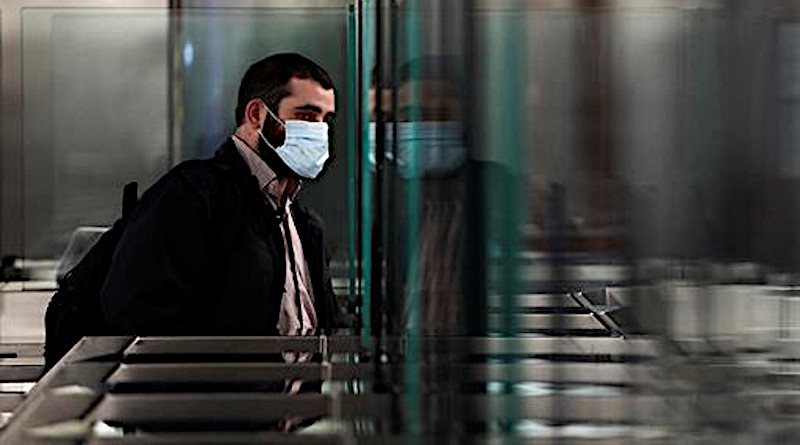Pandemic’s Second Wave Leaves EU Leaders With Few Options – OpEd
By Arab News
By Ranvir Nayar*
After days of deliberations and exactly five months after France lifted the coronavirus disease (COVID-19) lockdown that had been imposed on March 11, French President Emmanuel Macron on Wednesday again declared a national public health emergency and reinstated night curfews in nine key cities, including the capital Paris and its suburbs. People will not be allowed out of their homes between 9 p.m. and 6 a.m. and the curfew will last for at least four weeks, but more likely six.
Spain’s Catalonia region has closed its bars and restaurants for 15 days, while in Germany, on the day that new infections exceeded 5,000 for the first time since April, Chancellor Angela Merkel announced that bars and restaurants in higher-risk areas would close early and private gatherings would be limited to a maximum of 10 people. Partial lockdowns have already been reintroduced in the Netherlands and Czech Republic.
The story is similar all over the EU, as the COVID-19 pandemic stages a strong comeback following the crippling first wave that spread across the continent in the first half of this year. In many countries, the daily count of cases is already matching or exceeding the highest levels recorded in the first wave. The death toll has also begun to creep up, although it is not in the same league as earlier. France, for instance, has been recording more than 20,000 cases every day for more than a week, and the number of people admitted to hospitals this week exceeded 9,000 in a day for the first time since June.
Despite the apparent similarities between the first wave and now, there are stark differences on the ground — some good and some not so good. For instance, the high daily infection rates reflect the greater number of tests now being conducted, as almost all countries are much better equipped for testing and combating the pandemic generally than they were earlier in the year.
Health care professionals may also be better equipped to handle the second wave, as they have had experience of dealing with the symptoms and possible treatments of the virus after an early diagnosis. This is unlike the first wave, when, for most patients, the diagnosis of COVID-19 came in the fairly late stages. Moreover, hospitals are better supplied with the necessary equipment and medicines.
However, until a vaccine is developed and available in sufficient quantities, health care systems will always face the risk of being overwhelmed by the virus. That is a scenario that all governments would do practically anything to avoid. This is the reason why they have been relatively quick to impose fairly severe restrictions in an attempt to curb the spread of the virus and keep the number of hospitalizations manageable. Macron, for instance, has set a daily infections target of 3,000 to 4,000, compared to the current 20,000. Germany has set a “desired” limit of 50 cases per 100,000 people before restrictions like the closing of bars and restaurants before 11 p.m. kick in.
Moreover, there now seems to be better coordination at an EU-level, unlike during the first wave, when each country was left to fend for itself as all other members of the bloc closed their borders in a bid to prevent the virus from reaching them. EU leaders this week agreed on a common definition of high-risk zones and to coordinate measures such as imposing travel restrictions.
EU leaders are trying practically everything they can to avoid even thinking of a full second lockdown after the first one left the economy of the entire region crippled. Despite the fairly lavish bailout programs touching almost every part of the economy and reaching nearly every citizen, the entire EU is staring at a double-digit collapse in its gross domestic product this year, along with tens of millions of people becoming extremely vulnerable due to the economic cost of COVID-19.
Most sectors of the economy are likely to take at least two years before they can recover to pre-pandemic levels. The fiscal deficits of even the most prudent and tight-fisted governments across the EU have already breached their standard limits and are now close to record levels.
In such a situation, no leader would risk announcing another complete lockdown. Any such move would be devastating, not just for the leader but the country too. Moreover, it is highly unlikely that the people would accept the severe restrictions governments resorted to earlier in the year. Even in a country like Germany, which is known for its discipline, there have been strong protests against restrictions being reintroduced. It has been pretty much the same story in all nations, with some citizens openly flouting the rules even at the risk of catching the virus.
Thus, in the face of the second wave of the pandemic, the leaders of EU governments find themselves with limited options. Any drastic step like a complete nationwide lockdown would be bound to result in widespread protests and civil unrest. That is a scenario no political leader in a democracy would ever want to face.
- Ranvir S. Nayar is managing editor of Media India Group, a global platform based in Europe and India, which encompasses publishing, communication, and consultation services.

